I make no bones about it – this post is all glamor. I have chosen the most interesting, colorful and unusual birds to review. Talk about spoilt for choice, Mexico has an incredible number of species to choose from. We will definitely need a part 2.

Mexico
Mexico is a land of extremes. There are high and very low elevations and the contrast between mountains and plains means that the climate is either tropical or desert. These features are located in specific regions. In the center of Mexico are mountains and corresponding valleys. Deserts can be found in the northern areas and rainforests in the south and east.
Birds of Mexico
The incredible climates and geography of Mexico means that there is the potential for a great variety of birdlife here. eBird has an amazing 1,110 reported species with over 900 reported so far in 2023! Known for its exotic species, it is those we are looking at in this post. We have chosen 10 of the most beautiful and different birds in Mexico.
Ten of the Best
Keel-billed Toucan (Ramphastos sulfuratus)
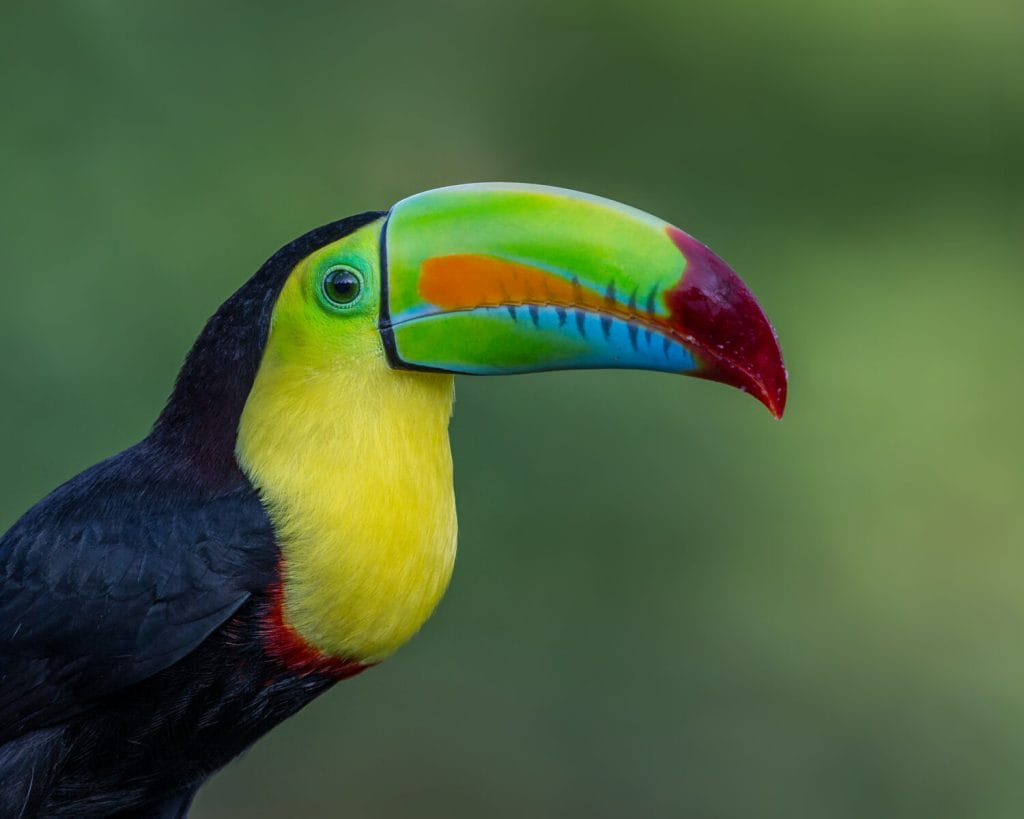

Identification and Size
Incredible looking large bird with a multi-colored bill tipped with red. Green around the eye blends into a yellow face and breast. The rest of the bird is black, with red under the tail.
Length: 20.4 – 21.8 inches
Weight: 13.4 – 15.2 ounces
Distribution

Seen throughout the year in southern Mexico. It lives in tropical forests in the lowlands.

Call
Diet
The Keel-billed Toucan eats fruit and seeds predominately. At times it will eat arthropods and small vertebrates.
Interesting Fact
These toucans are sociable birds at times, gathering in the mornings to feed together and play.
Northern Emerald-Toucanet (Aulacorhynchus prasinus)

Identification and Size
This is a medium sized tropical toucan with bright green plumage and a tail tipped with blue and red. Some birds have a blue throat and other subspecies have white. The bill is black underneath and yellow above.
Length: 11.8 – 14.5 inches
Weight: 4.7 – 6.6 ounces
Distribution

The Northern Emerald-Toucanet in endemic to Central America and can be seen in southern areas of Mexico in the mountainous areas.

Call
Diet
The Northern Emerald-Toucanet is a flexible feeder, taking fruits, invertebrates and vertebrates.
Interesting Fact
The Northern Emerald-Toucanet has a distinctive stance. When examining the area around it, the bird will cock its tail or it might lean forward and crane its neck to see what is around.
Rufous-tailed Jacamar (Galbula ruficauda)


Identification and Size
A hummingbird-like bird with a long black bill and creamy throat. A green head extends round to the breast and a burnt orange is on the belly. A long, graduated tail is red and black.
Length: 8.6 – 9.6 inches
Weight: 0.8 – 1.16 ounces
Distribution

An infrequent but regular visitor to south eastern Mexico in lowland areas including forest clearings and edges.

Call
Diet
An insectivorous bird eating flying insects including butterflies, moths and dragonflies.
Interesting Fact
Unlike most birds, this jacamar does not keep a tidy nest. It does not remove the chicks’ droppings or waste parts from food. The young birds must stand to avoid contaminating their plumage.
Green Kingfisher (Chloroceryle americana)


Identification and Size
A small species of kingfisher with a flat head and long bill. The green back is split by a white collar. The breast is rusty red and the belly is white.
Length: 11.8 inches
Weight: 1.2 – 1.4 ounces
Distribution

The Green Kingfisher is seen all year round in Mexico in all areas apart from the northern desert regions.

Call
Diet
The Green Kingfisher hunts for fish and only occasionally will take aquatic invertebrates.
Interesting Fact
The thick bill of the Green Kingfisher is used to excavate the nest by hammering into the hard packed soil.
Resplendent Quetzal (Pharomachrus mocinno)


Identification and Size
This mythical bird is unmistakable and stunning. A vivid, luminuous green plumage with black wings. The tail has several feathers and is long. A small head is covered in fluffy short feathers. The eye is black and bill pale orange.
Weight: 6.3 – 7.4 ounces
Distribution

The Resplendent Quetzal is found in cloud forest in the very southernmost part of Mexico. It can be seen infrequently, all year round.

Call
Diet
A frugivorous bird, the Resplendent Quetzal feeds on a wide range of fruits. It will only occasionally take insects or lizards.
Interesting Fact
A very shy and cautious bird, the Resplendent Quetzal will sit for long periods of time and only move to ensure brighter parts of its plumage are shaded.
Royal Flycatcher (Onychorhynchus coronatus)

Identification and Size
A orange brown flycatcher of medium size. A thickset appearance with a large head. Hidden is a spectacular crest of red and blue which site perpendicular to the face.
Length 6.5 – 7 inches
Weight: 6.3 – 7.4 ounces
Distribution

The northern sub species of the Royal Flycatcher can be seen in the southern most areas of Mexico in humid forests at lower elevations. It is present mostly in spring and summer.

Call
Diet
The Royal Flycatcher is insectivorous only, eating ticks, insects and grasshoppers.
Interesting Fact
The Royal Flycatcher has an incredible crest but it is very rarely seen.
Red Warbler (Cardellina rubra)
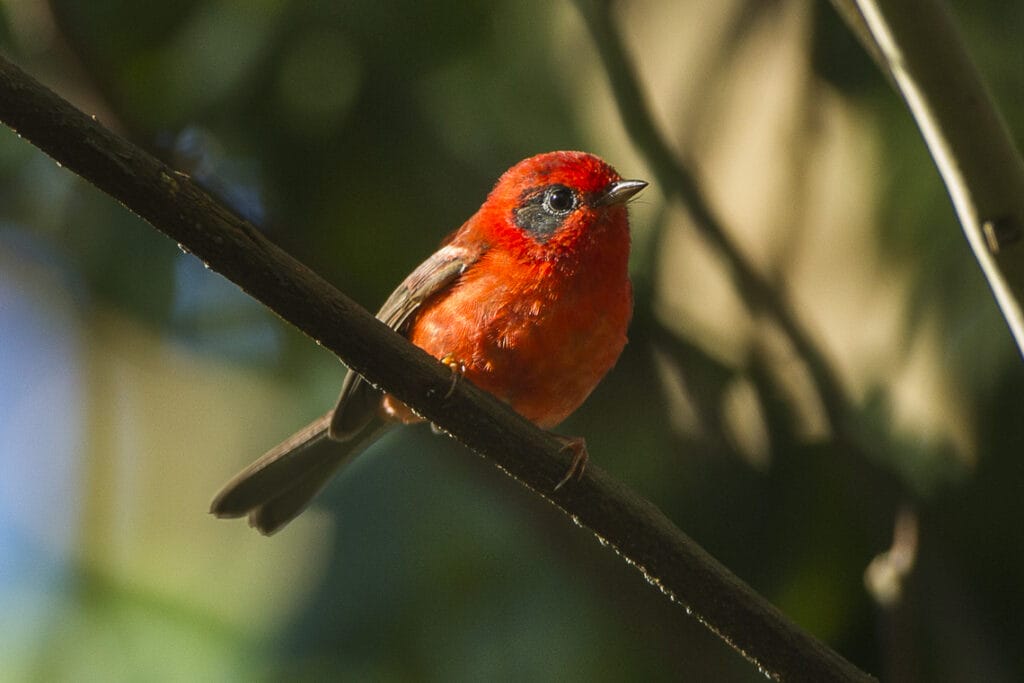
Identification
An unmistakable bird with vivid scarlet plumage with a silver or dark patch behind the eye.
Length: 4.9 – 5.3 inches
Weight: 0.27 – 0.3 ounces
Distribution
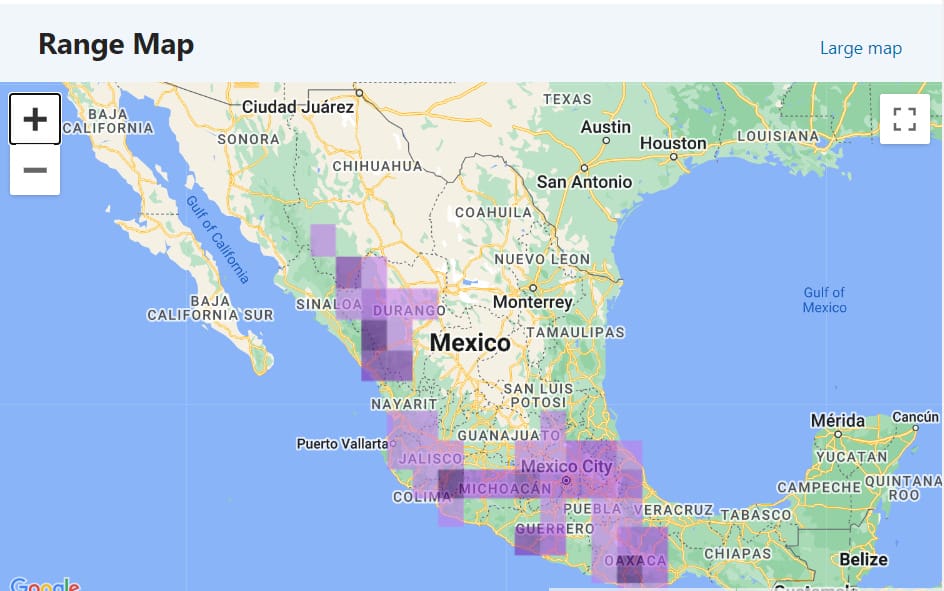
This gorgeous warbler is endemic to Mexico and is found in the highlands of the western and southern parts of the country. As a resident, it is seen all year round.

Call
Diet
The Red Warbler eats insects only.
Interesting Fact
The Red Warbler is a busy bird. If it is not bouncing around looking for food, it is sitting and flicking its tail, jerking its tail or repetitively preening
Chestnut-colored Woodpecker (Celeus castaneu)

Identification
Tropical woodpecker with an overall golden glow. Plumage is mid brown blending to a golden head and large crest. It also has a red patch behind the mouth.
Length: 8.4 – 9.4 inches
Weight: 2.8 – 3.7 ounces
Distribution

Seen all year round in southern parts of Mexico, in dense forested areas of evergreen and semideciduous trees.

Call
Diet
This woodpecker feeds mainly on ants and termites. It will occasionally consume available fruits.
Interesting Fact
The Chestnut-colored Woodpecker has large salivary glands which are used to neutralize the formic acid produced by ants.
Chestnut-headed Oropendola (Psarocolius wagleri)

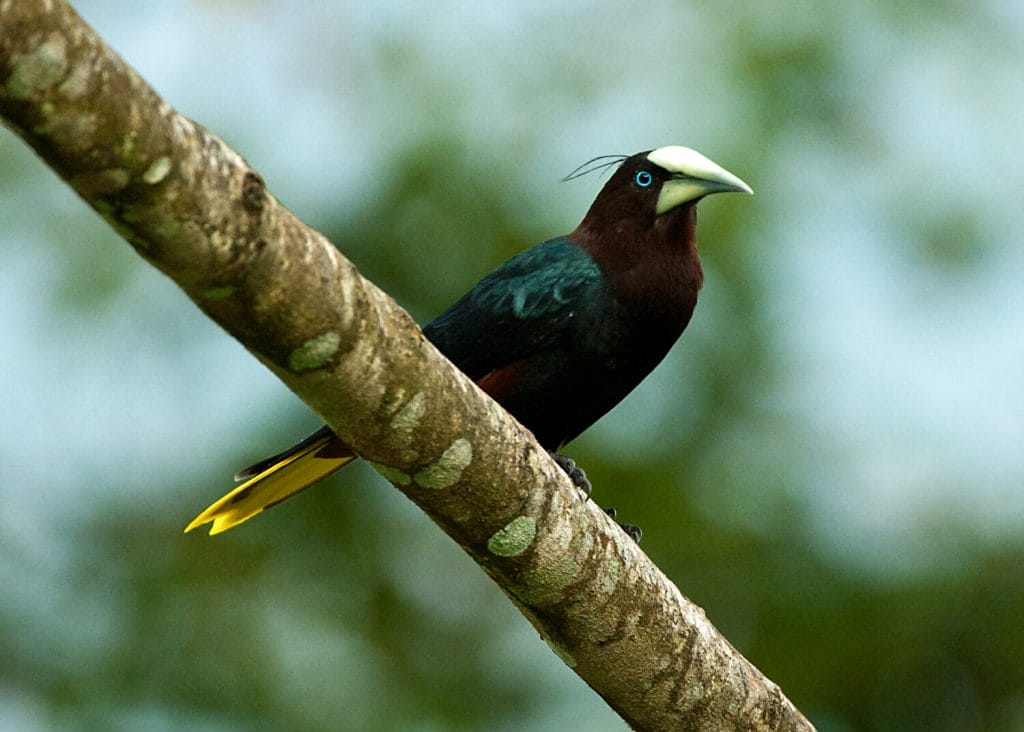
Identification and Size
A large black and brown bird with a bright yellow tail. The male has a brown neck, which leads into a large pale bill with blue eye and thin plumes. The female is a smaller, duller version.
Length: 11 – 13.7 inches
Weight: 4 ounces
Distribution
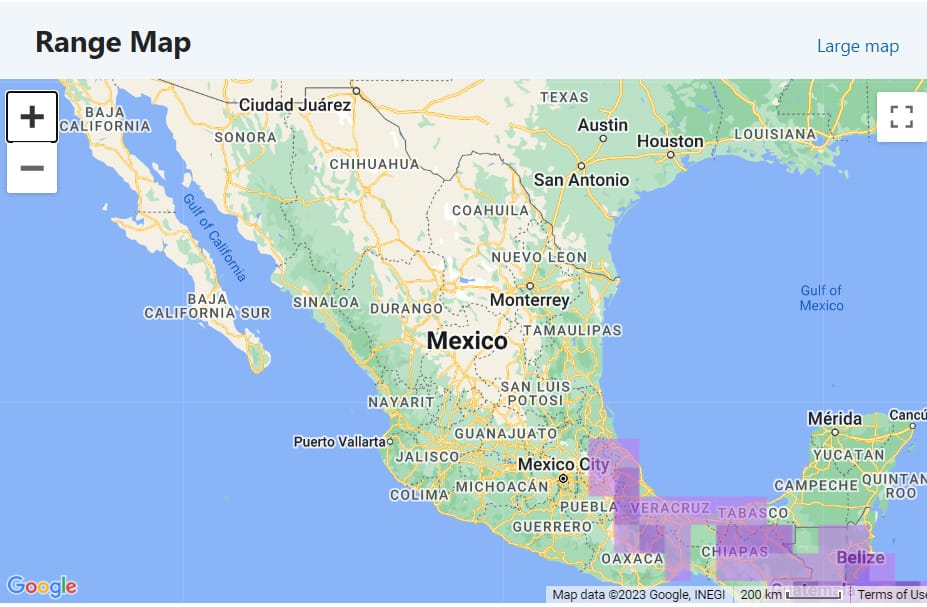
Found in forests and clearings regularly in spring and summer in south east Mexico.

Call
Diet
The Chestnut-headed Oropendola mainly eats frogs and lizards as well as some arthropods and some fruit and nectar.
Interesting Fact
The Chestnut-headed Oropendola nest in colonies and their long, pendulum like nests can be seen in the area, hanging from branches.
Bat Falcon (Falco rufigularis)

Identification and Size
This is a stunning small falcon with a black back and grey patterning. The front has grey scallops and a pale breast and collar. The head is black with yellow eye rings and patch above the bill.
Length: 9 – 11.8 inches
Weight: 3.8 – 8.5 ounces
Distribution

The Bat Falcon habitat is tropical forests in lowlands and mountains of western, eastern and souther Mexico. Can be seen all year round.

Call
Diet
The Bat Falcon, unsurprisingly, eats mainly bats. It will also take some invertebrates.
Interesting Fact
The female Bat Falcon is substantially larger than the male. She has a wingspan of 25.5 – 26.3 inches while his wingspan is 20 – 22.8 inches.
FAQs
The undisputed answer is the Resplendent Quetzal. Amazing that there is a consensus given the huge number of beautiful birds in Mexico. This bird is said to be a sacred symbol for Mayan and Aztec cultures.
The Crested Caracara is the national bird of Mexico and it is a stunning bird. You can see more about it in our post ‘Black birds in Florida’.
It is easier to describe birds as native (ie, naturally occuring) rather than endemic (found nowhere else) in places like Mexico as birds have no respect for borders! Some toucans are certainly native to Mexico.
What fantastic birds there are in Mexico. Nearly 1,000 species seen in 2023 so far. I find that statistic incredible. The Resplendent Quetzal is a worthy winner of most beautiful but the country certainly has a lot more to offer.










